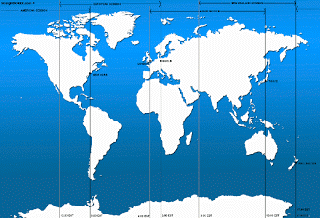Usually the currency markets have the highest trading activity when occur the overlap of the trading sessions of the two most important financial centers in the world: London and New York. In fact, generally the average range of price movement between 8 am and 12 pm EST time, is on average about 70 percent of the average total range of price movement during the European session and 80 percent of the average total range during the U.S. session. Undoubtedly, for all currency pairs this period is usually the most active and volatile, and for this reason is ideal for traders who want to get high profits in the market with fast price movements, ie traders with high tolerance risk.
By themselves, the above percentages indicate that traders who are interested in trading with highly volatile prices and wide price ranges must act precisely during the hours in which the markets of United States and Europe overlap, especially if they are unable to monitor the market all day.
Currency pairs | Europe-US Sessions Overlap (8 am – 12 pm EST) Range in pips |
|---|---|
EUR/USD | 65 |
USD/JPY | 58 |
GBP/USD | 78 |
USD/CHF | 88 |
EUR/CHF | 40 |
AUD/USD | 39 |
USD/CAD | 74 |
NZD/USD | 38 |
EUR/GBP | 27 |
GBP/JPY | 99 |
GBP/CHF | 105 |
AUD/JPY | 47 |
Note: The data shown in the table above correspond to the period of 2002-2004. Despite being outdated, the trend in the general behavior of the major currency pairs during this period remains today and can be extrapolated (to some extent). However there may be some discrepancy because the market is dynamic and constantly changing. As far as possible I will try to include updated data in the table above for a more precise analysis behavior of these currency pairs during the period in which the U.S. and European trading sessions overlap.
Source: Day Trading and Swing Trading the Currency Market: Technical and Fundamental Strategies to Profit form Market Swings of Kathy Lien.
The main reason for the high activity and volatility presents in the Forex market at this time is the particularly high trading volume during these hours as there are lots of American and European investors transacting. Normally, this trading volume is higher compared to other periods of the trading day, which is the reason why strong movements usually occur in all currency pairs, either upward or downward. This large number of traders and investors is caused by European participants who continue entering and exiting the market during the last hours of the European session and American participants who begin to enter the market in the course of the first hours of the U.S. session.
During this period we can see major moves in the market, especially when there are reports and important economic and political news from the U.S. and Canada. Also, the market can also be affected by “late” news from Europe.
If a trend is established during the European session, this trend will probably continue, as traders and investors in the United States decide to enter the market and establish their positions after reading what happened earlier in the day. However, the trader also have to be careful, because at the end of the European session, some traders in that zone may decide to close their positions, which can cause erratic market movements just before lunchtime in America. These movements may cause losses to the traders who are unprepared.
In conclusion, we can say that the period in which the trading sessions of the markets of Europe and United States overlap is less suitable for traders who have high risk aversion and prefer markets with less movement due to the high volatility that often characterize the market during these hours. A more appropriate period for this type of traders is the overlap period between the European session – Asian session in which the market remains rather calm.






